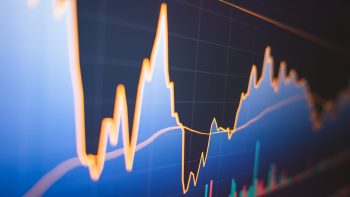How 2 percent GDP growth looks in the real economy
The broadest indicator of the economic health of the U.S. is the GDP — the gross domestic product. Imperfect, yes, but still the closest thing for figuring out how things are going.
The Commerce Department has finished crunching the numbers on the third quarter and found the GDP grew at 2 percent, down slightly from its previous estimate. That’s hardly an A+, if we’re to grade the economy’s performance, but it’s also not a surprise, given that the overall GDP growth since January 2011 is precisely 2 percent.
“It’s not bad news, but not good news either,” said Ann Owen, an economics professor at Hamilton College.
Owen said typically, after a recession caused by a financial crisis, growth tends to be slow initially. So the glass-half-full interpretation would be that we just need to give the economy more time.
“We’re doing a little bit better than treading water,” she said.
Going forward, she said modest GDP growth will mean modest increases elsewhere in the economy, from interest rates to wages. However, if this 2 percent rate of growth persists, the thing to watch will be who is getting those wage increases.
“When we have really big increases in GDP, typically, everybody sees an increase,” said Owen. “When we have more modest increases, it becomes more of a concern that everybody is not seeing the increases.”
Even though wage increases will be “modest,” Ken Goldstein, an economist at the Conference Board, doesn’t expect prices will rise as fast. He said that’ll pinch companies’ profits, which will limit their investments.
“Basically, all investment these days on a business point of view is for repair and replacement,” he said. “It’s not really for upgrades and expansion.”
Goldstein said it’s the latter that would goose growth, as would expanding the size of the labor force. Moreover, suppressed profits and investment may limit hiring, said Kevin Jacques, a professor at Baldwin Wallace University and former Treasury official.
“[Firms] are not going to hire as many workers as you otherwise would have if the economy was growing faster,” he said.
Taken together, “to some degree, it becomes self-reinforcing,” he added.
Goldstein said he expected to see GDP to chug along at 2 percent, maybe a little higher.
“At least for now, and it ain’t that bad,” he said, especially compared with growth rates in Europe and Japan.
There’s a lot happening in the world. Through it all, Marketplace is here for you.
You rely on Marketplace to break down the world’s events and tell you how it affects you in a fact-based, approachable way. We rely on your financial support to keep making that possible.
Your donation today powers the independent journalism that you rely on. For just $5/month, you can help sustain Marketplace so we can keep reporting on the things that matter to you.


















